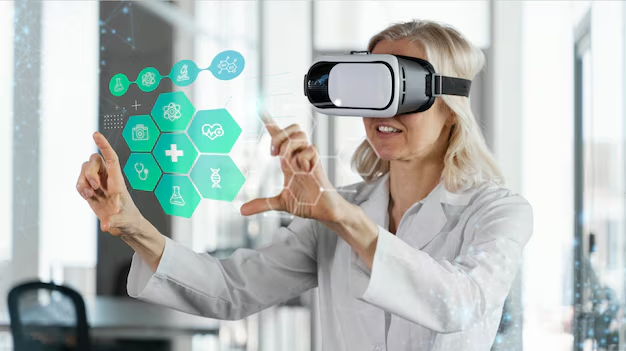
The future of healthcare is being dramatically shaped by innovations in technology, offering the potential for improved outcomes, efficiency, and accessibility. These advancements are transforming how care is delivered, from prevention to treatment. Some of the key innovations and technologies currently shaping the future of health include:
1. Artificial Intelligence (AI) and Machine Learning
AI is revolutionizing healthcare by enabling better decision-making, personalized treatments, and improved diagnostics. Machine learning algorithms can analyze vast amounts of patient data to identify patterns and predict health issues before they become critical. Some applications include:
- Predictive analytics for early diagnosis of diseases (e.g., cancer, diabetes).
- AI-powered imaging for radiology, where algorithms can help interpret X-rays, MRIs, and CT scans with precision.
- Virtual health assistants that provide instant responses and support for patients.
2. Telemedicine and Telehealth
Telemedicine has grown exponentially, particularly since the COVID-19 pandemic, enabling patients to consult healthcare providers remotely. This trend is expected to continue with advancements in:
- Remote monitoring tools to track vital signs like blood pressure, glucose levels, and heart rate in real-time.
- Virtual consultations for mental health services, routine check-ups, and specialized care, making healthcare more accessible for rural and underserved populations.
- Robotic surgeries and AI assistance for precision in complex procedures, potentially reducing recovery times and improving outcomes.
3. Wearable Health Devices
Wearable technology, such as smartwatches, fitness trackers, and medical-grade devices, is helping patients and healthcare providers monitor health in real-time. These devices are becoming more sophisticated, with the ability to:
- Track heart rate, sleep patterns, and physical activity.
- Detect early signs of conditions like atrial fibrillation, hypertension, or even seizures.
- Provide data to physicians, enabling more personalized treatment plans and faster interventions.
4. Genomics and Personalized Medicine
Advances in genomics are paving the way for personalized medicine, where treatments and therapies are tailored to an individual’s genetic makeup. Key innovations include:
- Gene editing (e.g., CRISPR) that could potentially cure genetic disorders.
- Pharmacogenomics, which helps doctors prescribe medications based on a person’s genetic response to drugs, improving treatment efficacy and reducing side effects.
- Targeted cancer therapies that focus on the genetic mutations causing cancer, leading to more effective treatments with fewer side effects.
5. Robotics and Automation
Robotic technologies are playing an increasingly important role in both clinical and administrative settings. These advancements include:
- Surgical robots that allow for minimally invasive procedures, reducing recovery times and improving precision.
- Robotic process automation (RPA) in administrative tasks like billing, scheduling, and patient records management, improving efficiency and reducing human error.
- Assistive robots for elderly care, helping patients with mobility issues or performing daily tasks.
6. Blockchain for Healthcare Data Security
Blockchain technology offers a potential solution to the growing concern over data security and privacy. Key benefits include:
- Decentralized record-keeping, making patient records more secure, traceable, and accessible only to authorized personnel.
- Improved data sharing between healthcare providers, ensuring accurate, up-to-date information is available across different systems without compromising security.
7. 3D Printing in Healthcare
3D printing technology is being used in healthcare for applications such as:
- Prosthetics and implants: Customizing prosthetics to fit individual patients, significantly improving comfort and function.
- Organ and tissue printing: Although still in early stages, 3D printing is being used to print human tissues, and researchers are working on the possibility of printing entire organs in the future.
- Medical models: Creating accurate, 3D printed models of organs or body parts to assist surgeons in planning complex procedures.
8. Nanotechnology
Nanotechnology involves manipulating matter on a molecular or atomic scale, with several exciting applications in medicine:
- Targeted drug delivery: Tiny nanoparticles can deliver drugs directly to a targeted area, improving the effectiveness of treatments while reducing side effects.
- Nanorobots that could perform tasks such as removing plaque from arteries or repairing tissues at a cellular level.
9. Augmented Reality (AR) and Virtual Reality (VR)
AR and VR are being applied in a variety of ways in healthcare:
- Medical training: VR simulations allow students and doctors to practice surgeries or medical procedures in a risk-free environment.
- Pain management: VR is being used as a tool for pain management, offering immersive environments that help distract patients during painful treatments or procedures.
- Rehabilitation: AR is used in physical therapy and rehabilitation, where patients can perform exercises while being guided through immersive, interactive experiences.
10. Health Data Analytics
The ability to analyze big data and derive meaningful insights is a key component of future healthcare systems. This includes:
- Population health management: Identifying trends in large groups to predict and prevent outbreaks or manage chronic conditions on a broader scale.
- Real-time decision support systems: Helping clinicians make better decisions at the point of care by providing up-to-date, evidence-based recommendations.
- Outcomes measurement: Using data analytics to assess the effectiveness of treatments and interventions to improve overall care quality.
Conclusion
The future of healthcare is incredibly promising, with innovations in technology offering potential breakthroughs in disease prevention, treatment, and patient care. As these technologies continue to evolve, we can expect to see healthcare becoming more personalized, accessible, and efficient. The integration of these advancements has the potential to revolutionize the way we approach health, improving both the quality of care and the patient experience worldwide.
